- Clone
- P84 (See other available formats)
- Regulatory Status
- RUO
- Other Names
- SHPS-1, BIT, P84, PTPNS1, CD172 antigen-like family member A
- Isotype
- Rat IgG1, κ
- Barcode Sequence
- GATTCCCTTGTAGCA
| Cat # | Size | Price | Quantity Check Availability | ||
|---|---|---|---|---|---|
| 144043 | 10 µg | $369.00 | |||
CD172a, also known as SIRPα, is a type I transmembrane protein with one V-set Ig-like and two C-set Ig-like domains in the extracellular portion, and two ITIM motifs and a proline-rich region in the cytoplasmic tail. CD172a is expressed by monocytes, macrophages, myeloid cells, and neuronal tissue. The phosphorylation of SIRPα ITIMs induces the recruitment and activation of the tyrosine phosphatases PTPN6 and PTPN11, resulting in the negative regulation of several biological processes. The ligands of CD172a are CD47, SP-A, and SP-D.
Product Details
- Verified Reactivity
- Mouse
- Antibody Type
- Monoclonal
- Host Species
- Rat
- Immunogen
- Mouse brain membrane protein
- Formulation
- Phosphate-buffered solution, pH 7.2, containing 0.09% sodium azide and EDTA
- Preparation
- The antibody was purified by chromatography and conjugated with TotalSeq™-B oligomer under optimal conditions.
- Concentration
- 0.5 mg/mL
- Storage & Handling
- The antibody solution should be stored undiluted between 2°C and 8°C. Do not freeze.
- Application
-
PG - Quality tested
- Recommended Usage
-
Each lot of this antibody is quality control tested by immunofluorescent staining with flow cytometric analysis and the oligomer sequence is confirmed by sequencing. TotalSeq™-B antibodies are compatible with 10x Genomics Single Cell Gene Expression Solutions.
To maximize performance, it is strongly recommended that the reagent be titrated for each application, and that you centrifuge the antibody dilution before adding to the cells at 14,000xg at 2 - 8°C for 10 minutes. Carefully pipette out the liquid avoiding the bottom of the tube and add to the cell suspension. For Proteogenomics analysis, the suggested starting amount of this reagent for titration is ≤ 1.0 µg per million cells in 100 µL volume. Refer to the corresponding TotalSeq™ protocol for specific staining instructions.
Buyer is solely responsible for determining whether Buyer has all intellectual property rights that are necessary for Buyer's intended uses of the BioLegend TotalSeq™ products. For example, for any technology platform Buyer uses with TotalSeq™, it is Buyer's sole responsibility to determine whether it has all necessary third party intellectual property rights to use that platform and TotalSeq™ with that platform. - Application Notes
-
Additional reported applications (for the relevant formats) include: blocking SIRPa interaction with CD474, in vivo blocking of dendritic cell migration3, enhancing of macrophage phagocytosis2,4, immunohistochemical staining of cerebellum frozen sections1, immunoprecipitation2,4, and spatial biology (IBEX)5,6.
- Additional Product Notes
-
TotalSeq™ reagents are designed to profile protein levels at a single cell level following an optimized protocol similar to the CITE-seq workflow. A compatible single cell device (e.g. 10x Genomics Chromium System and Reagents) and sequencer (e.g. Illumina analyzers) are required. Please contact technical support for more information, or visit biolegend.com/totalseq.
The barcode flanking sequences are GTGACTGGAGTTCAGACGTGTGCTCTTCCGATCTNNNNNNNNNN (PCR handle), and NNNNNNNNNGCTTTAAGGCCGGTCCTAGC*A*A (capture sequence). N represents either randomly selected A, C, G, or T, and * indicates a phosphorothioated bond, to prevent nuclease degradation.
View more applications data for this product in our Scientific Poster Library. -
Application References
(PubMed link indicates BioLegend citation) -
- Comu S, et al. 1997. J. Neurosci. 17:8702. (IHC)
- Gresham HD, et al. 2000. J. Exp. Med. 191:515. (IP)
- Fukunaga A, et al. 2004. J. Immunol. 172:4091. (Block)
- Oldenborg PA, et al. 2000. Science 288:2051. (Block, IP)
- Radtke AJ, et al. 2020. Proc Natl Acad Sci U S A. 117:33455-65. (SB) PubMed
- Radtke AJ, et al. 2022. Nat Protoc. 17:378-401. (SB) PubMed
- RRID
-
AB_2876489 (BioLegend Cat. No. 144043)
Antigen Details
- Structure
- Type I transmembrane protein
- Distribution
-
Monocytes, macrophages, myeloid cells, neuronal tissue
- Function
- Negative regulation of several biological processes
- Interaction
- PTPN6, PTPN11
- Ligand/Receptor
- CD47, SP-A, SP-D
- Cell Type
- Dendritic cells, Macrophages, Monocytes, Neutrophils
- Biology Area
- Cell Adhesion, Cell Biology, Immunology, Signal Transduction
- Molecular Family
- Adhesion Molecules, CD Molecules, Protein Kinases/Phosphatase
- Antigen References
-
1. Zhao XW, et al. 2011. P. Natl. Acad. Sci. USA 108:18342.
2. Verjan-Garcia N, et al. 2011. J. Immunol. 187:2268.
3. Sato-Hashimoto M, et al. 2011. J. Immunol. 187:291.
4. Raymond M, et al. 2010. Eur. J. Immunol. 40:3510. - Gene ID
- 19261 View all products for this Gene ID
- UniProt
- View information about CD172alpha on UniProt.org
Other Formats
View All CD172a (SIRPα) Reagents Request Custom ConjugationCompare Data Across All Formats
This data display is provided for general comparisons between formats.
Your actual data may vary due to variations in samples, target cells, instruments and their settings, staining conditions, and other factors.
If you need assistance with selecting the best format contact our expert technical support team.
-
Purified anti-mouse CD172a (SIRPα)
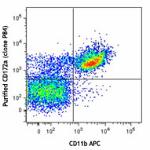
C57BL/6 mouse bone marrow cells were stained with CD11b APC ... 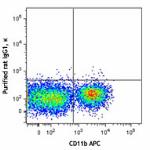
-
FITC anti-mouse CD172a (SIRPα)
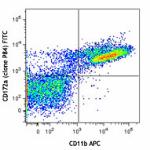
C57BL/6 mouse bone marrow cells were stained with CD11b APC ... 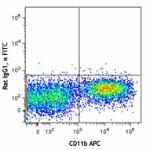
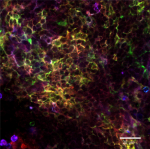
Fixed whole mount mouse spleen was stained with FITC CD172a ... -
PE/Cyanine7 anti-mouse CD172a (SIRPα)

C57BL/6 mouse bone marrow cells were stained with CD11b FITC... -
PerCP/Cyanine5.5 anti-mouse CD172a (SIRPα)

C57BL/6 mouse bone marrow cells were stained with CD11b APC ... -
PE anti-mouse CD172a (SIRPα)
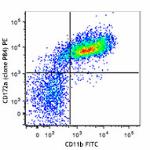
C57BL/6 mouse bone marrow cells were stained with CD11b FITC... 
-
APC anti-mouse CD172a (SIRPα)
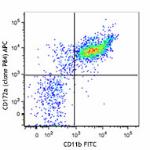
C57BL/6 mouse bone marrow cells were stained with CD11b FITC... 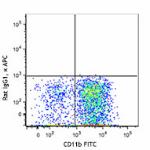
-
PE/Dazzle™ 594 anti-mouse CD172a (SIRPα)
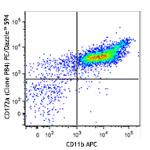
C57BL/6 mouse bone marrow cells were stained with CD11b APC ... 
-
Alexa Fluor® 594 anti-mouse CD172a (SIRPα)

C57BL/6 mouse frozen spleen section was fixed with 4% parafo... 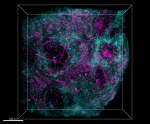
Paraformaldehyde-fixed (4%), 500 μm-thick mouse spleen secti... -
APC/Cyanine7 anti-mouse CD172a (SIRPα)

C57BL/6 mouse bone marrow cells were stained with CD11b FITC... -
Alexa Fluor® 488 anti-mouse CD172a (SIRPα)

C57BL/6 mouse bone marrow cells were stained with CD11b PE a... 
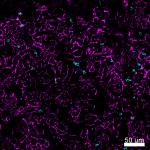
Confocal image of C57BL/6 mouse thymus sample acquired using... 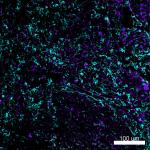
Mice were injected subcutaneously with sheep red blood cells... -
Alexa Fluor® 700 anti-mouse CD172a (SIRPα)
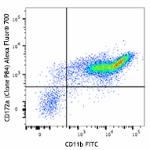
C57BL/6 mouse bone marrow cells were stained with CD11b FITC... -
Biotin anti-mouse CD172a (SIRPα)

C57BL/6 mouse bone marrow cells were stained with CD11b PE a... 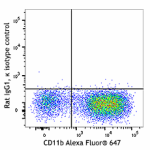
-
Alexa Fluor® 647 anti-mouse CD172a (SIRPα)

C57BL/6 mouse bone marrow cells were stained with CD11b PE a... 
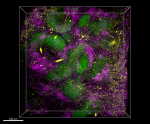
Paraformaldehyde-fixed (4%), 500 μm-thick mouse spleen secti... -
APC/Fire™ 750 anti-mouse CD172a (SIRPα)

C57BL/6 mouse bone marrow cells were stained with CD11b PE a... 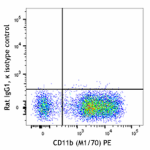
-
TotalSeq™-A0422 anti-mouse CD172a (SIRPα)
-
Brilliant Violet 510™ anti-mouse CD172a (SIRPα)

C57BL/6 mouse bone marrow cells were stained with CD11b APC ... -
TotalSeq™-C0422 anti-mouse CD172a (SIRPα)
-
Ultra-LEAF™ Purified anti-mouse CD172a (SIRPα)

C57BL/6 mouse bone marrow cells were stained with CD11b APC ... 
-
TotalSeq™-B0422 anti-mouse CD172a (SIRPα)
-
PerCP/Fire™ 780 anti-mouse CD172a (SIRPα)

C57BL/6 mouse bone marrow cells were stained with anti-mouse... -
Spark Red™ 718 anti-mouse CD172a (SIRPα) (Flexi-Fluor™)
